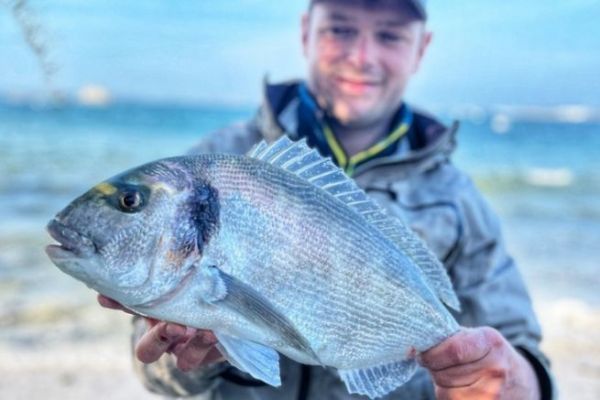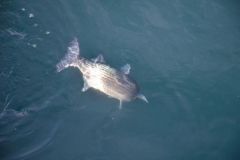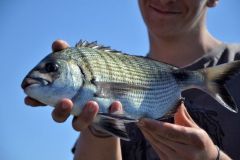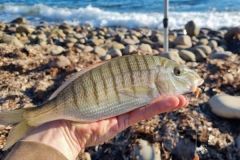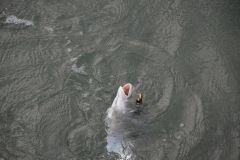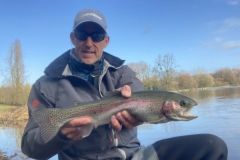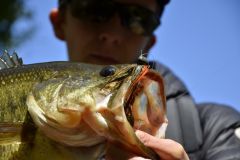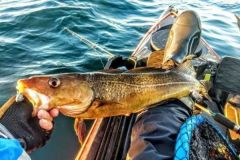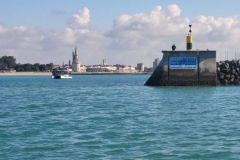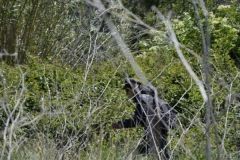The diversity of spots
Morlaix Bay is an exceptional playground for surfcasting thanks to the variety of its habitats. There are exposed rocky points, muddy foreshores at the bottom of the bay, current zones where the tide channels fish feeding, and vast ocean beaches facing out to sea. Each sector imposes its own rules and calls for an adapted strategy, both in terms of equipment and choice of bait.
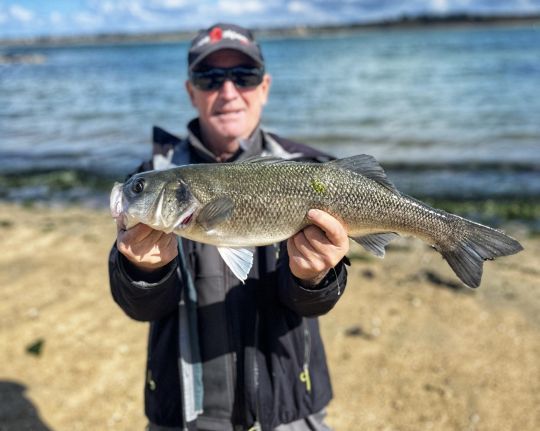
What you need
Surfcasting in Morlaix Bay is a demanding technique. Rods 4 to 5 m long must be able to propel sinkers weighing between 80 and 200 g. Powerful reels (size 6000 to 9000) enable you to cast far and retrieve fast, sometimes under heavy loads (seaweed, doublets of fish).
Installation depends on the substrate: weighted tripods for rocks, stakes for sandy beaches.
As for mountings, the local specificities are marked by the presence of seaweed and marine currents.
We rarely fish fine: 30/100 minimum with conical snatch, 50/100 line body and 35/100 sinkers. Grapple sinkers are preferred to hold the bottom, but it's essential to vary them throughout the session as the strength of the current changes with the tide. In calmer conditions or with low coefficients, flat or pyramidal sinkers provide discretion and precision.
Large hooks, 1/0 to 3/0, reduce accidental catches and avoid injuring small fish. Circle hooks are recommended, especially for sea bream and gilthead bream, as they bite at the edge of the lips and limit breakage.
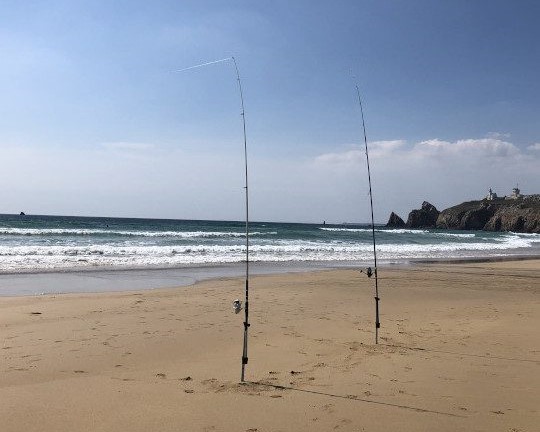
Harvesting and bait selection
A day's surfcasting often begins with the harvesting of bait. Worms and gravel are picked up with a spade. These are then threaded onto hooks using long baiting needles. You can also collect razor clams, cockles or clams, excellent for targeting bream.
The green crab is formidable on sea bass, as stomach analyses show. Shrimp, small fish and squid complete the range.
For sea bream, the true grail of the fisherman, the king bait remains the soft-shell clam (kouilhoù kezeg in Breton), extracted from the depths of certain foreshores. Combative and delicate on the plate, this fish is a symbol of successful summer sessions.
In the bay, you'll also find mullet, red mullet, old mullet, dogfish and, more rarely, eels (now protected). Ocean beaches are ideal for flatfish.
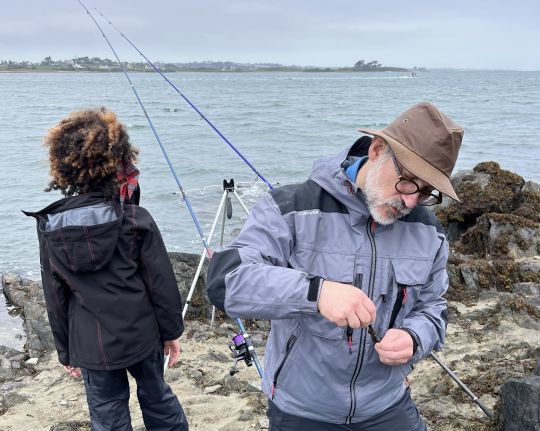
Choosing the right tide moment
The tide is the key to surfcasting. Each spot has its own rhythm: some come to life at the very start of the rising tide, when bass and mullet enter the bay; others provide good dorado at the start of the falling tide. On the whole, the rising tide is the best time to observe the bottom and anticipate feeding areas.
This type of fishing requires vigilance and organization: move back gradually with the tide, avoid being encircled by the water, especially with several rods in action.
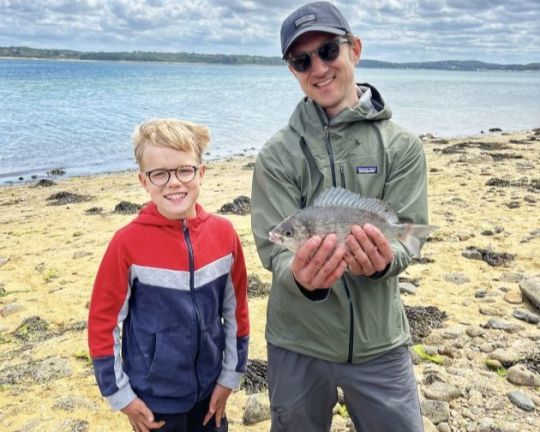
Sporty, technical fishing
Surfcasting in Morlaix Bay is not just a waiting game. It demands physical fitness, especially when you have to move forward in waders to cast or manage your equipment in the wind and waves. Observation of transition zones (rocks, sand, mudflats) is essential for locating fish.
Here, the diversity of habitats, the power of the currents and the amplitude of the tides demand constant adaptation. The angler has to read the landscape, adjust his rigs, vary his baits and stay mobile. It's this requirement that makes the practice so exciting and makes Morlaix Bay one of Brittany's finest surfcasting grounds.

 /
/ 